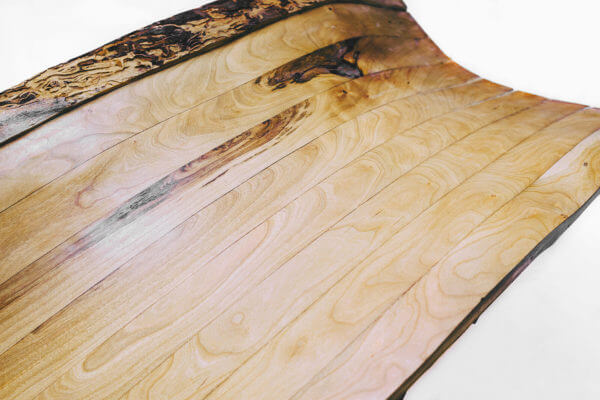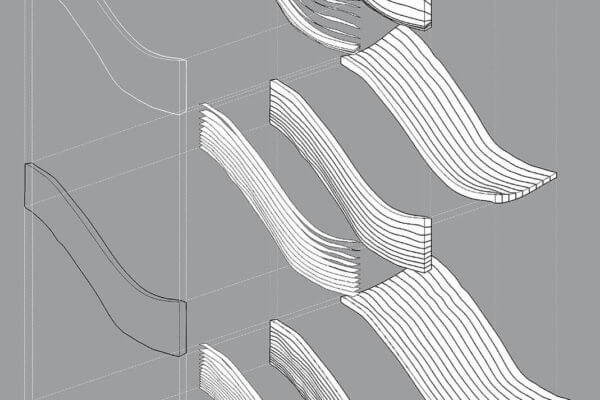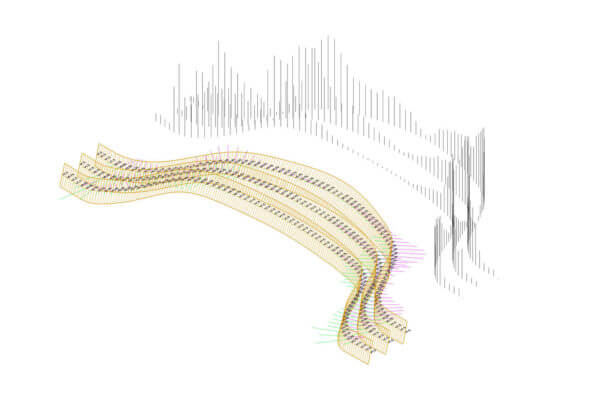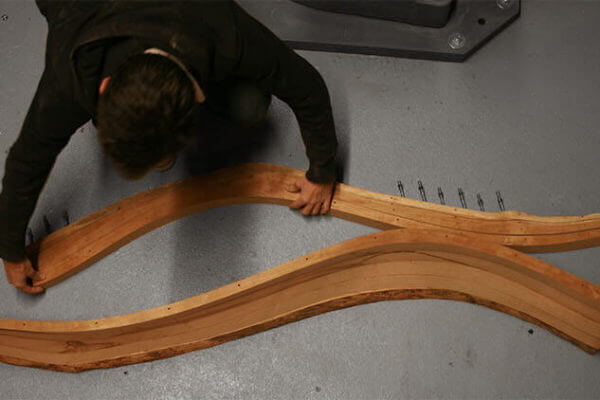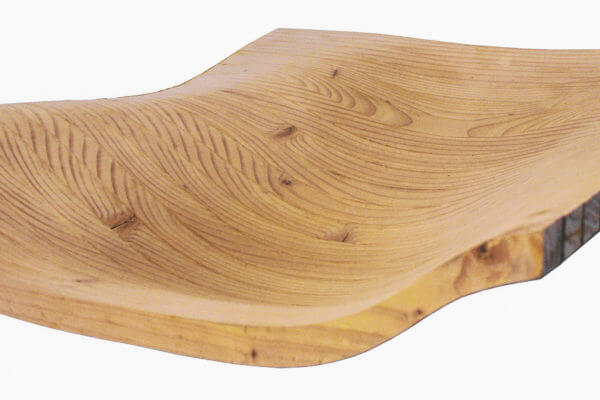Project Title: Bandsawn Bands
This project demonstrates an innovative technique for designing and fabricating freeform surfaces within the constraints of live-edged wood flitches. By 3D scanning a naturally curved tree section and designing into the available material, we are able to unfold a compact amount of wood into a smooth, continuous topological surface (i.e. furniture or architecture).
The process utilizes a robotically operated bandsaw to cut a series of curved strips which, when rotated and laminated, can approximate doubly-curved and digitally defined geometry. The thin kerf of the bandsaw blade allows for a tight nesting of finished surfaces, which, through a close relationship between available material and designed geometry, affords practically zero waste when compared to CNC contour milling. This coordination of non-standard material geometries, 3D scanning, parametric algorithms, designer input and robotic control serves to bolster the role of feature-based material intuition in design and sustainable manufacturing.
For more information, see: Johns, R and Foley, N 2014 ‘Bandsawn Bands: Feature-Based Design and Fabrication of Nested Freeform Surfaces in Wood.’ In: McGee, W and Ponce de Leon, M (eds) Robotic Fabrication in Architecture, Art and Design. Springer. pp 17-32. [Text available here]





